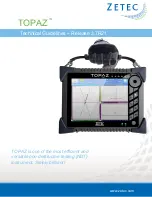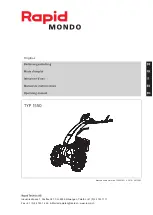
•
Make an eyelet (F) where the guide wire is
to be connected to the boundary wire.
3.4.3.1 To put the boundary wire in a slope
The product can operate in 35% slopes. Slopes
that are too steep must be isolated with the
boundary wire. The gradient (%) is calculated as
height per m. Example: 10 cm / 100 cm = 10%.
10 cm /4"
100 cm /40"
10%
•
For slopes steeper than 35% inside the work
area, isolate the slope with boundary wire.
•
For slopes steeper than 15% along the outer
edge of the lawn, put the boundary wire 20
cm / 8 in. (A) from the edge.
A
>15%
•
For slopes adjacent to a public road, put an
obstacle of minimum 15 cm / 6 in. along the
outer edge of the slope. You can use a wall
or a fence as an obstacle.
3.4.3.2 Passages
A passage is a section that has boundary wire on
each side and that connects 2 parts of the work
area. The distance between the boundary wire on
each side in the passage must be a minimum of
60 cm / 24 in.
Note: If a passage is less than 2 m / 6.5 ft. wide,
install a guide wire through the passage.
The minimum distance between the guide wire
and the boundary wire is 30 cm / 12 in. The
product always runs to the left of the guide wire
as seen facing the charging station. It is
recommended to have as much free area as
possible to the left of the guide wire (A).
>2 m / 6.5 ft
A
>30 cm / 12"
>60 cm / 24"
3.4.3.3 To make an island
CAUTION: Do not put a section of
boundary wire across the other. The
sections of boundary wire must be
parallel.
CAUTION: Do not put the guide wire
across the boundary wire.
CAUTION: Isolate or remove obstacles
that are less than 15 cm / 5.9 in. in
height. Isolate or remove obstacles
that slope slightly, for example, stones,
trees or roots. This will prevent
damage to the blades of the product.
1378 - 003 - 16.04.2020
Installation - 17
















































